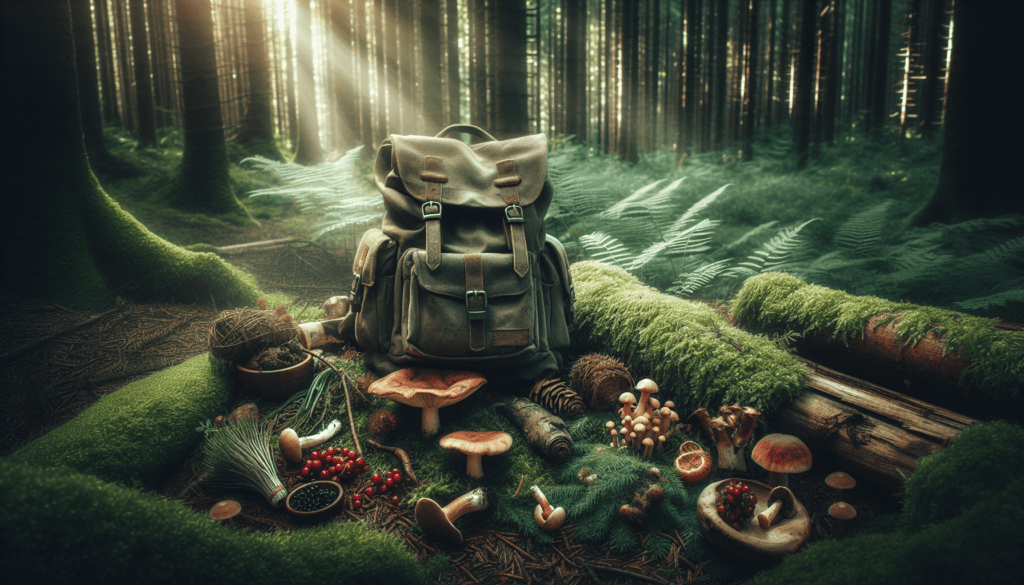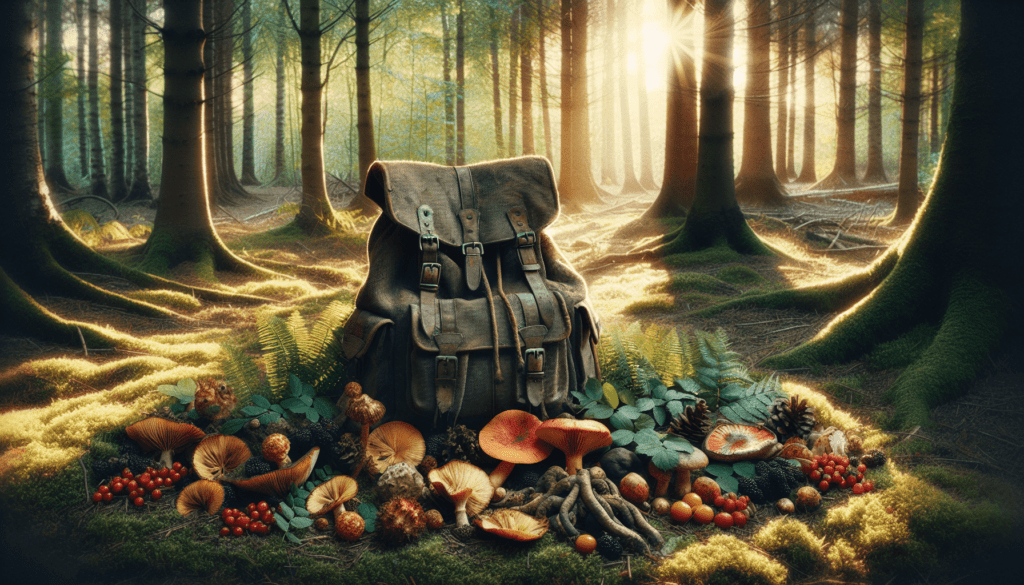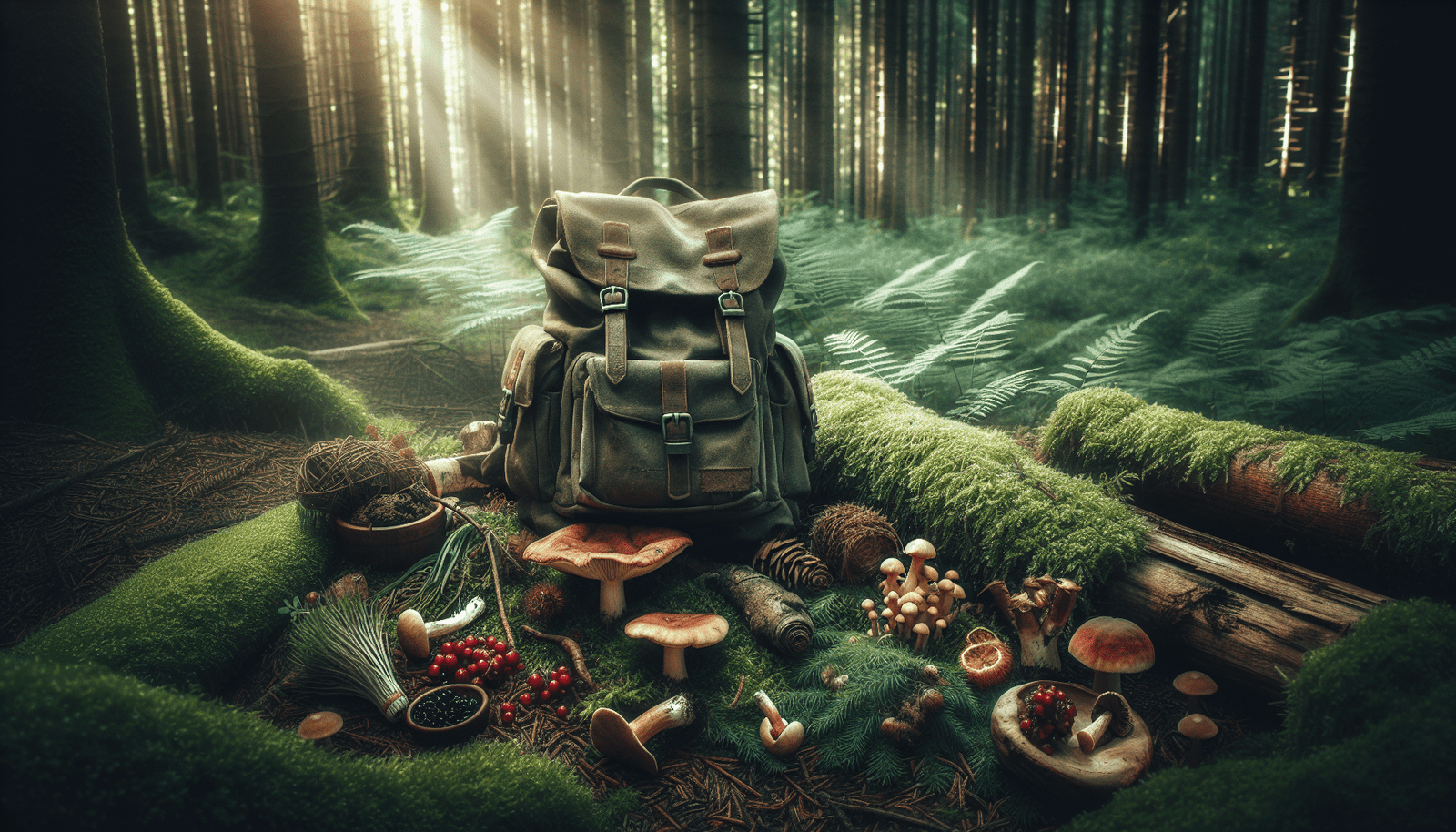Have you ever found yourself wondering how to find food in the wild? Whether you’re an avid adventurer, a survivalist, or simply someone who loves nature, understanding how to locate and identify food in the wild is a crucial skill. Being prepared for the unexpected can save your life and provide a sense of confidence in your ability to handle challenging situations. This guide will provide you with comprehensive information on the various methods and techniques for finding food in natural environments.
Understanding Your Environment
The first step in finding food in the wild involves having a thorough understanding of your environment. Different environments offer different resources, and being able to identify these resources quickly and accurately is crucial. This section will delve into various natural settings, such as forests, deserts, and coastal areas, and highlight the types of food you might find in each.
Forests
Forests offer a rich variety of edible plants, fungi, and animals. Recognizing edible plants and understanding their growth seasons can vastly improve your chances of finding food.
- Edible Plants: Common edible plants in forested areas include wild berries, nuts, and roots.
- Fungi: Mushrooms can be abundant, but caution is necessary. There are many poisonous varieties, so informed identification is crucial.
| Plant Name | Identifiable Features | Nutritional Value |
|---|---|---|
| Blackberries | Dark, juicy fruits | High in vitamins and antioxidants |
| Acorns | Glossy brown nuts | Good source of carbohydrates and fat |
| Chickweed | Small white flowers | Rich in vitamins A, B, and C |
Deserts
In deserts, food sources can be more challenging to find due to the harsh conditions. However, some plants and animals thrive in these areas.
- Cacti: Many cacti are edible and contain essential nutrients.
- Insects: Various insects can be a reliable protein source.
- Reptiles: Lizards and other small reptiles are common and edible if properly prepared.
| Plant/Animal | Identifiable Features | Nutritional Value |
|---|---|---|
| Prickly Pear Cactus | Flattened pads with spines | High in vitamin C |
| Grasshopper | Long hind legs, can jump | High in protein |
| Desert Iguana | Sturdy body, sandy coloration | Good source of protein |
Coastal Areas
Coastal areas and marine environments can provide abundant sources of food if you know where to look.
- Shellfish: Clams, mussels, and crabs are usually abundant and nutritious.
- Fish: With appropriate tools, fishing can yield high-protein meals.
- Seaweed: Various types of seaweed are rich in vitamins and minerals.
| Marine Life | Identifiable Features | Nutritional Value |
|---|---|---|
| Mussels | Bivalve shell, dark color | Rich in protein, vitamins, and minerals |
| Sea Bass | Elongated body, found in shallow waters | High-quality protein |
| Kelp | Large, brown seaweed | High in iodine and fiber |
Essential Tools and Equipment
Preparation is key when it comes to surviving in the wild. Having the right tools and equipment can make the difference between success and failure in finding food.
Cutting Tools
A good knife or multi-tool is indispensable. It can be used for foraging, hunting, and preparing food.
- Knives: A sturdy, sharp knife is essential for various tasks.
- Multi-tools: These combine multiple functions, like cutting, opening, and carving.
Cooking Equipment
In some scenarios, raw food might not be safe to eat, making simple cooking equipment necessary.
- Portable Stove: Useful for cooking food safely.
- Fire Starting Kit: Essential for building a fire for cooking and warmth.
Collection Containers
Carrying and storing foraged food is easier with the right containers.
- Bags: Lightweight, durable bags are useful for collecting berries, nuts, and other small items.
- Buckets: Small, collapsible buckets can be handy for catching fish or collecting water.

Identifying Edible Plants
Identifying edible plants is one of the most fundamental skills for finding food in the wild. It’s vital to distinguish between safe and harmful plants, as consuming the wrong plant can lead to severe consequences.
General Identification Tips
Certain characteristics can help you identify edible plants. While these tips are not foolproof, they can serve as helpful guidelines.
- Leaf Shape: Many edible plants have distinctly shaped leaves.
- Color: Bright, vibrant colors often indicate a plant is safe, but not always.
- Smell: Pleasant smelling plants are more likely to be edible.
Specific Edible Plants
Below are some commonly found edible plants and their identifiable traits.
| Plant Name | Identifiable Features | Season |
|---|---|---|
| Dandelion | Yellow flowers, toothed leaves | Spring to Fall |
| Wild Garlic | Grass-like leaves, garlic odor | Early Spring |
| Purslane | Thick, succulent leaves, stems | Summer |
The Universal Edibility Test
When unsure whether a plant is edible, the Universal Edibility Test can be used. This test involves several steps to determine if a plant is safe to eat.
- Separate the Plant: Divide the plant into its basic parts—leaves, stems, roots, buds, and flowers.
- Skin Contact Test: Rub a part of the plant on the inside of your wrist. If there’s no reaction after 15 minutes, proceed.
- Lips and Mouth Test: Place a small piece on your lips and wait for 15 minutes. If there’s no reaction, then.
- Taste and Wait: Chew a small amount and wait for 8 hours to check for adverse reactions.
Foraging Techniques
Foraging for food requires more than just identification skills. Proper techniques can maximize your efficiency and ensure you’re gathering in a sustainable way.
Areas to Forage
Different terrains offer different food sources. Exploring varied landscapes can increase your chances of finding edible items.
- Meadows: Often have a high density of edible plants and flowers.
- Riverbanks: Can reveal water-loving plants and often have rich soil.
- Woodlands: Provide nuts, berries, and herbs.
Sustainable Foraging
Foraging should be done sustainably to ensure that nature continues to thrive.
- Harvesting Etiquette: Only take what you need and leave enough for the plant to continue growing.
- Avoid Overharvesting: Picking too much can disrupt ecosystems.

Hunting and Trapping
In addition to foraging, hunting and trapping can provide significant amounts of food. However, these methods require skill, patience, and sometimes specialized equipment.
Basic Hunting Techniques
Hunting large game can be difficult and often requires a deep knowledge of animal behavior.
- Tracking: Learn to recognize animal tracks and signs.
- Weapons: A bow, rifle, or even a handcrafted spear can be used.
Trapping Techniques
Trapping small animals is often more feasible than hunting bigger game. Here are some simple and effective trapping methods.
- Deadfall Trap: A heavy object is used to crush the animal.
- Snare Trap: A loop of wire or string can catch the animal by the neck or leg.
Fishing
Fishing is another viable method for securing food, often requiring less effort than hunting or trapping.
- Fishing Rod and Line: If you have the equipment, this is a straightforward method.
- Hand Fishing: Techniques like spearfishing or setting traps in shallow water can also be effective.
Cooking and Preparing Food
Once food is gathered, the next step is preparing it safely to ensure it is edible and provides maximum nutrition.
Cleaning and Preparing
Proper cleaning and preparation are crucial when dealing with wild foods.
- Washing Plants: Rinse plants thoroughly to remove dirt and parasites.
- Butchering Animals: Use clean, sharp tools and follow safe butchering practices.
Cooking Methods
Different foods require different cooking methods to be safe for consumption.
- Boiling: Useful for plants and meats to kill any potential pathogens.
- Grilling: Over an open flame can add flavor and ensure thorough cooking.
- Smoking: Preserving meat by smoking can extend its shelf life.
Storage
Proper storage techniques can help keep your food safe and fresh for a longer period.
- Drying: Dehydrating plants and meats can make them last longer.
- Cool Storage: Keep foods in a shaded, cool area to prevent spoiling.
Safety Precautions
Surviving in the wild requires not just finding food but doing so safely. Proper handling and preparation are essential to avoid illness.
Avoiding Poisonous Plants
Misidentification of plants can lead to poisoning. Knowing the signs of poisonous plants can help you avoid them.
- Examples of Poisonous Plants: Familiarize yourself with plants like poison ivy, hemlock, and nightshade.
- Symptoms: Nausea, vomiting, and dizziness are common symptoms of plant poisoning.
Water Safety
In the wild, ensuring that your water source is clean and safe is equally important as finding food.
- Filtering Water: Use a portable filter or boil water before drinking.
- Avoid Stagnant Water: Still water can harbor harmful bacteria and parasites.
Animal Safety
Encountering wild animals can be dangerous. Knowing how to avoid confrontations is crucial.
- Avoid Provoking: Most wild animals will not attack unless threatened.
- Safe Encounters: Make noise to signal your presence and give animals space to retreat.
Conclusion
Finding food in the wild is a multifaceted skill that involves understanding your environment, using the right tools, identifying edible plants, foraging, hunting, trapping, and cooking food safely. This comprehensive guide aims to equip you with the knowledge and confidence needed to survive in nature’s challenging conditions. Remember, preparation and knowledge are your best tools in ensuring your survival and making your experience in the wild a successful one.
Support us! Wilderness gear Pro may earn a small commission from affiliate links in this article. Learn More

